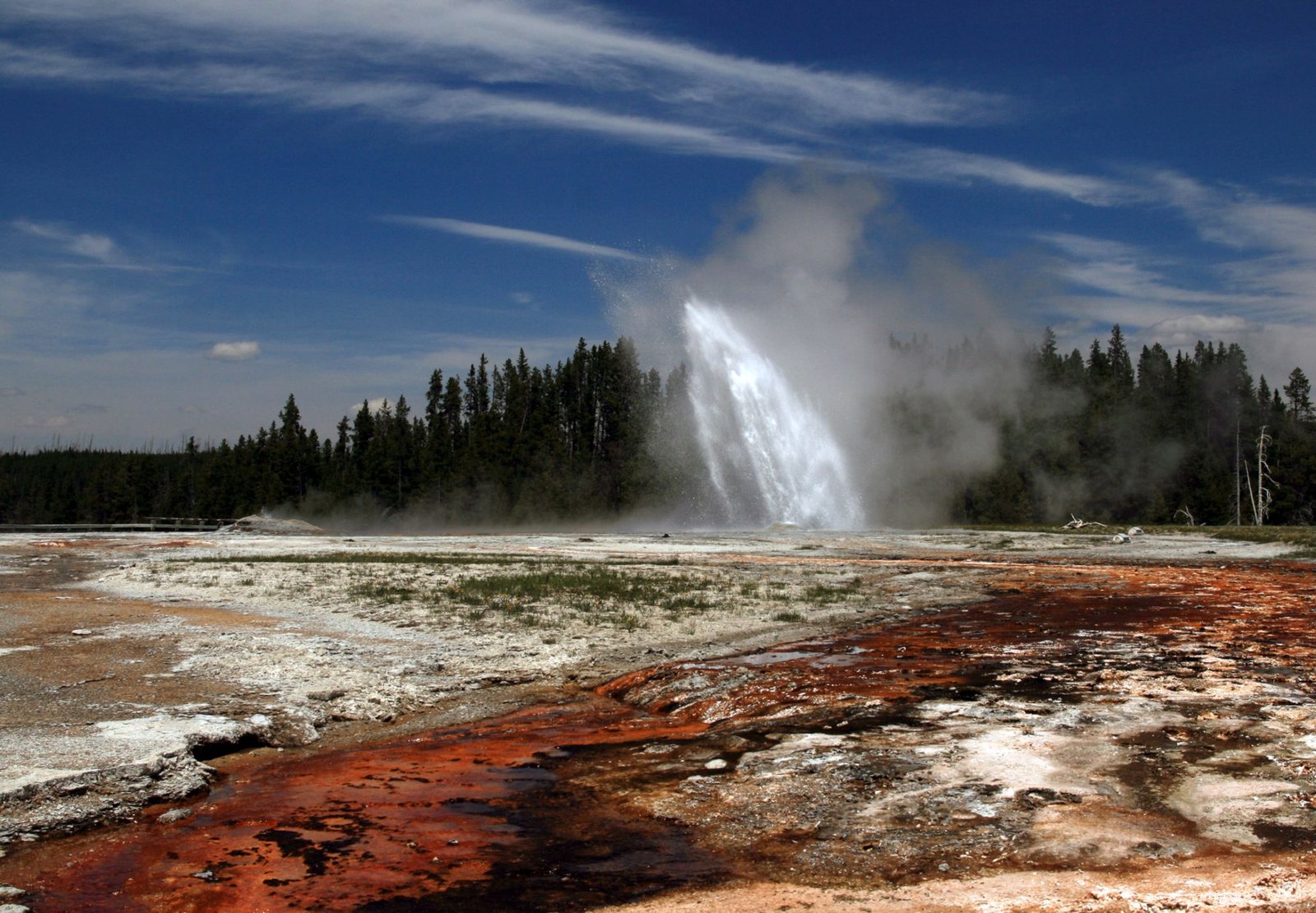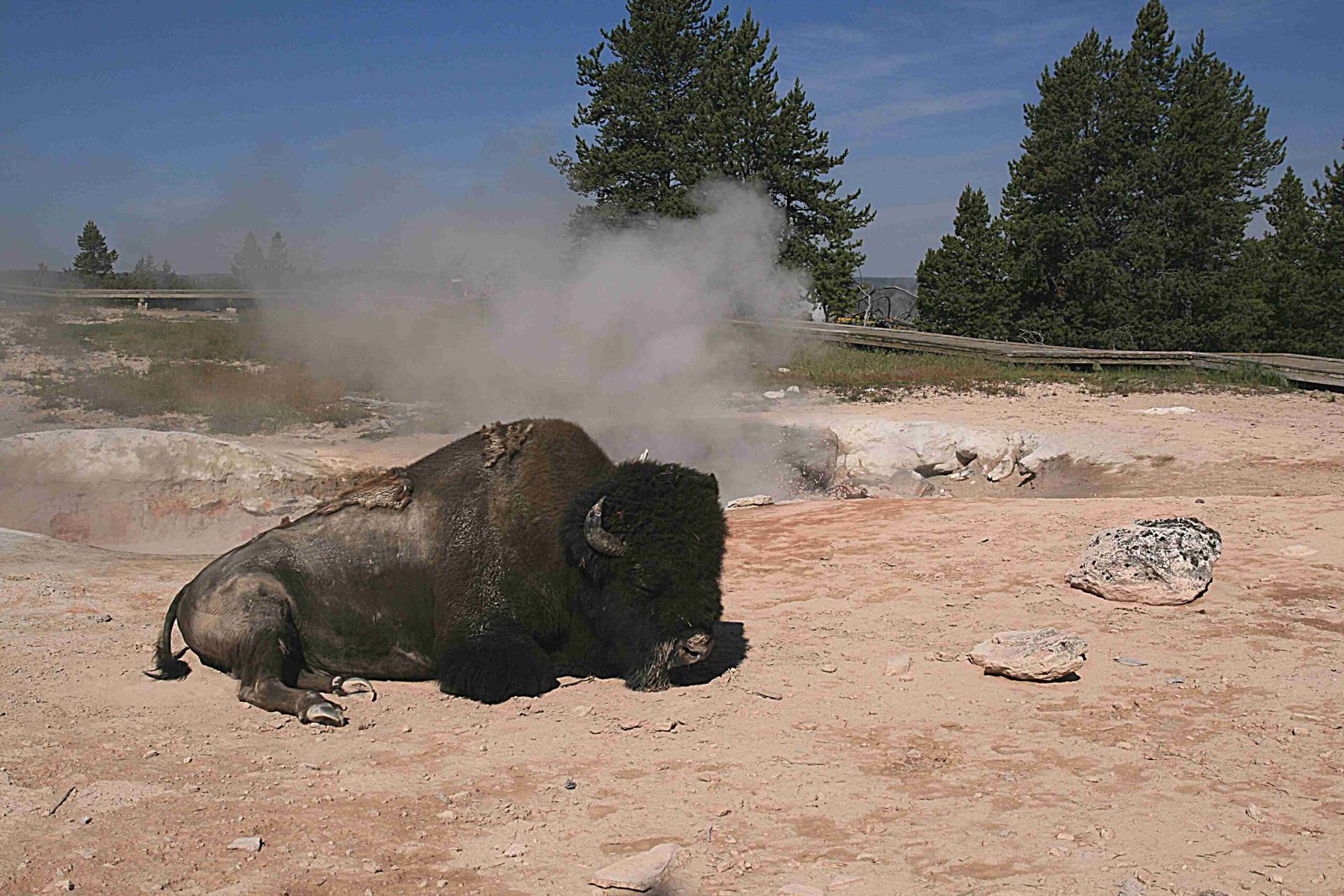Yellowstone National Park is renowned for its diverse wildlife, including grizzly bears and wolves. While direct confrontations between these apex predators are rare, they do occur, often resulting in intense battles for territory and food resources. These encounters showcase the raw power of nature and the complex dynamics between species in this unique ecosystem. Visitors to Yellowstone may witness these awe-inspiring interactions, but must always prioritize safety and follow park guidelines.
What Triggers Grizzly Bear and Wolf Confrontations in Yellowstone?

Grizzly bears and wolves in Yellowstone National Park often find themselves in competition for the same resources, which can lead to confrontations. These encounters typically occur due to:
- Scarcity of food sources
- Territorial disputes
- Protection of young
- Competition for prime hunting grounds
During these confrontations, grizzly bears, with their immense size and strength, often have the upper hand. However, wolves, known for their pack mentality and strategic hunting techniques, can pose a significant threat when in larger numbers.
How Do Grizzly Bears Defend Themselves Against Wolf Packs?

When a grizzly bear finds itself facing off against a wolf pack, it employs several defensive strategies:
- Intimidation: The bear will stand on its hind legs, making itself appear larger and more threatening.
- Vocalization: Loud roars and growls are used to assert dominance and scare off potential attackers.
- Physical aggression: If necessary, the bear will use its powerful claws and jaws to fight off wolves.
- Defensive posturing: The bear may position itself with its back against a tree or rock to prevent attacks from behind.
These tactics are often effective in deterring wolf packs, as the potential risk of injury or death outweighs the benefits of confrontation for the wolves.
Where Are the Best Locations to Observe Wildlife Interactions in Yellowstone?
While specific encounters between grizzly bears and wolves are unpredictable, certain areas in Yellowstone National Park are known for their high concentration of wildlife, increasing the chances of witnessing such interactions:
- Lamar Valley
- Hayden Valley
- Yellowstone Lake area
- Mammoth Hot Springs
- Tower-Roosevelt area
These locations offer vast open spaces and abundant prey, attracting both grizzly bears and wolves. However, it’s crucial to maintain a safe distance and use proper viewing equipment such as binoculars or telephoto lenses.
What Safety Precautions Should Visitors Take When Observing Wildlife?
When observing wildlife in Yellowstone, especially potentially dangerous animals like grizzly bears and wolves, visitors must adhere to strict safety guidelines:
| Safety Measure | Description |
|---|---|
| Maintain distance | Stay at least 100 yards away from bears and wolves |
| Carry bear spray | Always have bear spray accessible and know how to use it |
| Travel in groups | Hike or ski in groups of three or more people |
| Make noise | Alert animals to your presence to avoid surprise encounters |
| Proper food storage | Use bear-proof containers and never leave food unattended |
| Stay alert | Be aware of your surroundings and watch for signs of wildlife |
| Follow park rules | Adhere to all park regulations and ranger instructions |
How Does the National Park Service Manage Grizzly Bear and Wolf Populations?
The National Park Service employs various strategies to manage and protect both grizzly bear and wolf populations in Yellowstone:
- Habitat preservation: Protecting key areas that are crucial for both species’ survival.
- Population monitoring: Regular surveys and tracking to assess population health and trends.
- Research programs: Ongoing studies to better understand behavior, ecology, and interactions between species.
- Human-wildlife conflict mitigation: Implementing measures to reduce conflicts between wildlife and park visitors.
- Education and outreach: Providing information to visitors about wildlife safety and conservation efforts.
These management efforts aim to maintain a balanced ecosystem while ensuring the safety of both wildlife and park visitors.
What Are the Long-term Effects of Grizzly Bear and Wolf Interactions on Yellowstone’s Ecosystem?
The interactions between grizzly bears and wolves in Yellowstone have far-reaching effects on the park’s ecosystem:
- Trophic cascades: The presence of these apex predators influences the behavior and population dynamics of their prey species, such as elk and bison.
- Scavenger benefits: When bears or wolves make a kill, other scavengers like eagles, ravens, and coyotes also benefit from the remains.
- Vegetation changes: Altered prey behavior due to predator presence can lead to changes in plant communities and forest regeneration.
- Nutrient cycling: Predator kills distribute nutrients across the landscape, benefiting soil health and plant growth.
- Biodiversity maintenance: The complex interactions between these species help maintain a diverse and resilient ecosystem.
Understanding these long-term effects is crucial for conservation efforts and ecosystem management in Yellowstone National Park.
How Can Visitors Responsibly Photograph Wildlife Encounters?
Capturing images of wildlife encounters, especially dramatic ones like a grizzly bear fighting off wolves, requires responsible photography practices:
- Use long lenses (300mm or longer) to maintain a safe distance
- Never approach or disturb animals for a better shot
- Avoid using flash photography, which can startle or disorient wildlife
- Be patient and wait for natural behaviors rather than trying to provoke action
- Follow all park rules and ranger instructions regarding wildlife viewing
- Consider joining a professional wildlife photography tour for guidance and better opportunities
Remember, the safety and well-being of the animals should always take precedence over getting the perfect shot.
What Role Do Guided Tours Play in Witnessing Wildlife Interactions?
Guided tours can significantly enhance the chances of witnessing wildlife interactions in Yellowstone:
- Expert knowledge: Guides are familiar with animal behaviors and likely locations for sightings.
- Safety assurance: Professional guides ensure visitors follow proper safety protocols.
- Educational experience: Tours provide in-depth information about the park’s ecosystem and wildlife.
- Increased opportunities: Guides often communicate with each other, sharing recent sighting information.
- Proper equipment: Many tours provide high-quality viewing equipment like spotting scopes.
While there’s no guarantee of witnessing a grizzly bear fighting off wolves, guided tours can greatly improve the overall wildlife viewing experience in Yellowstone National Park.
By understanding the dynamics between grizzly bears and wolves, respecting wildlife, and following park guidelines, visitors can safely enjoy the incredible natural spectacles that Yellowstone has to offer, including the rare and thrilling sight of a grizzly bear asserting its dominance over a wolf pack.

